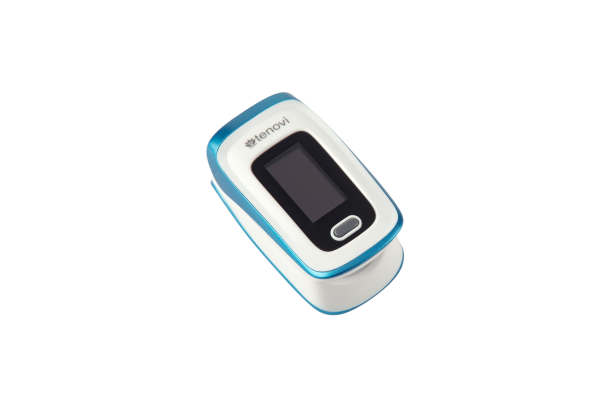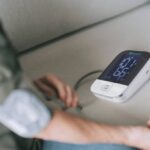Pulse oximetry is widely used to measure the amount of peripheral oxygen saturation (SpO2) in a patient’s blood using a digital pulse oximeter. These medical devices are used in clinics, hospitals, home healthcare, and remote patient monitoring. Correct pulse oximeter placement is crucial for acquiring accurate blood oxygen saturation readings needed for appropriate clinical decision-making.
This article will discuss the correct pulse oximeter placement of pulse oximetry sensors and probes on patients.
Remote patient Monitoring with Pulse Oximetry
Pulse oximetry is one of the major vital signs used to monitor patients in clinical settings and has contributed significantly to patient safety. Since its creation, pulse oximetry has made it 19 times more likely to find episodes of hypoxemia.
Traditionally, patients used stand-alone digital pulse oximeters to record blood oxygen readings in a log for review at later doctor visits. However, if health deteriorates between infrequent office visits, problems could be missed. With remote pulse oximetry monitoring, patients use connected devices to securely send real-time pulse oximetry data to providers.
This allows closer tracking of measurements and health status between visits. It also enables providers to educate patients on proper pulse oximeter placement, monitor measurement compliance, and send reminders for missed readings.
By shortening the feedback loop, remote patient monitoring allows early intervention. According to a recent study, “patients and clinicians had very positive perceptions of the pulse oximeter for COVID-19 remote monitoring, indicating high acceptability and usability of the device.”
Understanding Hypoxemia
The standard range for healthy oxygen saturation levels falls between 95% and 100%. A consistent SpO2 of less than 95% should be investigated, and a SpO2 of 90% signifies low oxygen levels. Adequate blood oxygen is critical for normal body function.
Hypoxemia is insufficient oxygen levels in the bloodstream. It can cause headaches, breathing issues, rapid heartbeat, and blue-colored skin. Heart and lung problems increase the risk of hypoxemia. It can also happen at high altitudes with less oxygen availability. Without treatment, hypoxemia can become life-threatening.
How Digital Pulse Oximeters work
A digital pulse oximeter has a sensor with a light-emitting diode (LED) connected to an oximeter via a cable. The LED emits light that interacts differently with oxygenated and deoxygenated hemoglobin molecules. The oxygen saturation level is determined by how much hemoglobin is saturated with oxygen – higher saturation means higher oxygen levels.
Most digital pulse oximeters are designed to take measurements from the finger. Some may think attaching a standard finger probe to an ear will work. However, you should never attach a standard pulse oximeter to an ear lobe or other body parts, as it in research shows it will give inaccurate readings. This can lead to missed opportunities in early diagnosis and urgently needed care.
Instead, special reusable and disposable oximeter sensors can be placed on adults’ earlobes, fingers, toes, noses, or foreheads. However, each sensor is designated for specific body locations and should not be used interchangeably. For example, a finger sensor should not be applied to the ear or nose.
Proper pulse oximeter placement varies by the type of device and probes available. Always your physicians and carefully review the manufacturer’s instructions for the correct designated site pulse oximeter placement.
Proper Pulse Oximeter Placement
Inappropriate digital pulse oximeter placement has been shown to affect measured oximetry values. Unfortunately, extremes in patient positioning may lead to changes in peripheral perfusion pressures resulting in erroneous pulse oximetry readings. Therefore, proper pulse oximeter placement is important to secure an accurate SpO2 reading. This may sometimes be difficult due to tremors, cold hands, bandages, or artificial nails.
As previously noted, when a reading cannot be taken for a finger, a specialized oximeter can be used on a different part of the body, such as the ear. This type of alternative oximeter probe is specifically designed for use in the ear. Pediatric probes are also made for children under a year old.
It is important to consult the manufacturer’s instructions for the correct designated site pulse oximeter placement. This video will walk you through proper oximeter placement and how to take a proper measure with the Tenovi pulse oximeter. For additional detailed information, please see Tenovi’s remote pulse oximetry monitoring guide.
Key Takeaways: Digital Pulse Oximeter Placement
Remote pulse oximetry has become vital for tracking patient blood oxygen levels at home. However, inaccurate readings can occur from improper sensor placement on the body. Therefore, correct pulse oximeter placement is paramount for receiving accurate readings.
Following manufacturer guidelines to select and position approved sensor types for ear, finger, toe, nose, or forehead locations is key. Pediatric and alternative probes are also available when needed. With appropriate sensor site selection and careful application, pulse oximetry can monitor patient oxygen status reliably.
This allows early detection of dangerous hypoxemia so timely treatment interventions can begin. Proper pulse oximeter placement ultimately helps safeguard positive patient outcomes by correctly interpreting blood oxygen data.
Are you looking for a better remote patient monitoring experience for your partners? Tenovi serves companies interested in offering remote patient monitoring solutions to healthcare providers. Schedule your free demo and consultation today!






